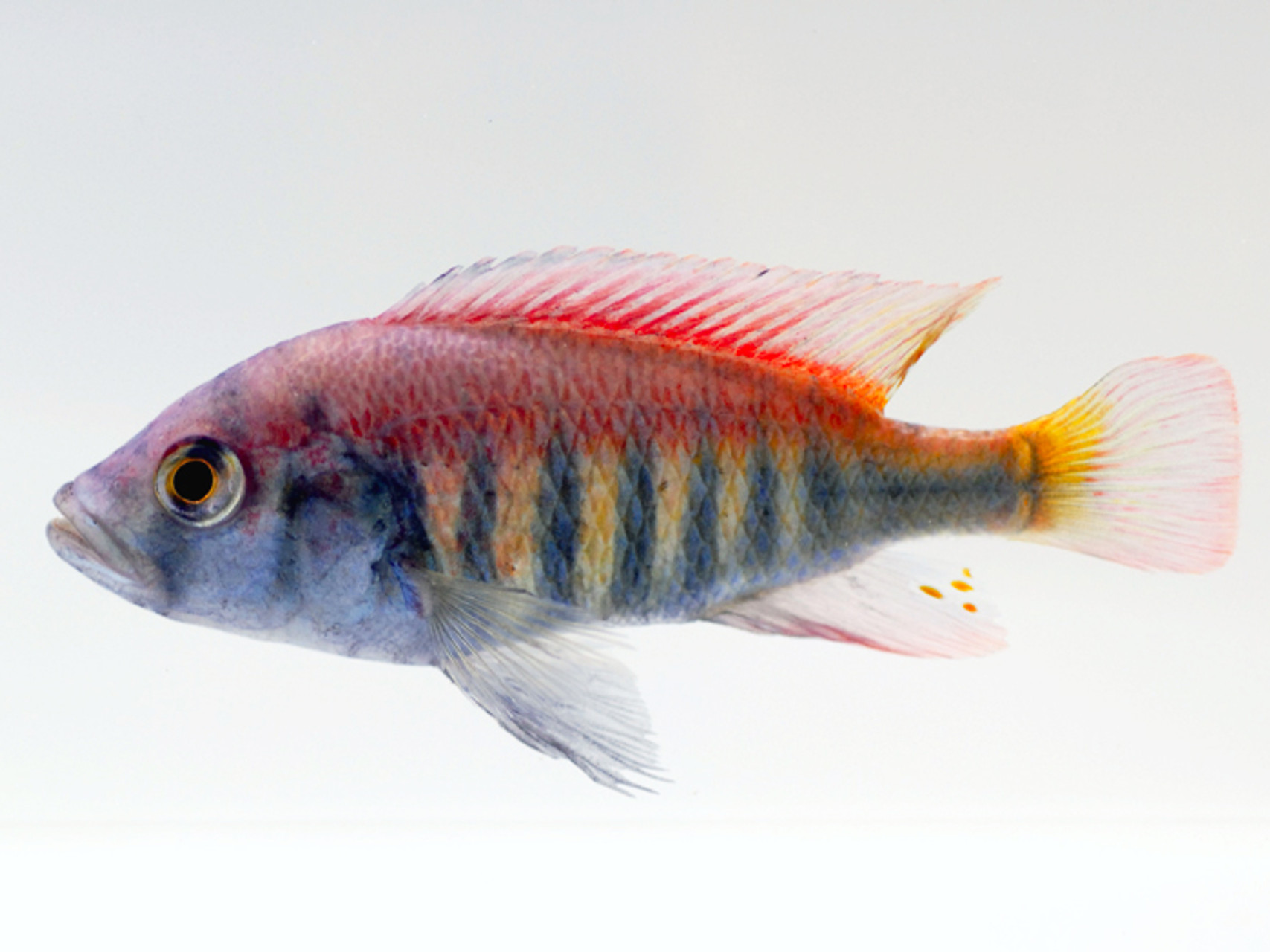Nyererei Cichlid (Pundamilia nyererei)

The cichlids of Africa’s Lake Victoria are often overshadowed by their more familiar cousins from Lakes Malawi and Tanganyika, but it’s impossible to overlook the colorful beauty of Pundamilia nyererei. The males of this piscine jewel seem to possess every color of the rainbow. Blues, yellows and greens fill the the body, and a deep orange hue develops along the back and fins. And, as if that weren’t enough, a series of black bars patterns the sides, along with a white highlight that brightens up the dorsal fin. Words do it little justice, as this fish is absolutely magnificent in its full breeding regalia, rivaling the beauty of even the most gaudy marine fishes. Though, as tends to be the case with many african cichlids, the full splendor of its adult appearance is rarely seen in the juvenile specimens most available to aquarists. It takes some time to see P. nyererei at its peak, but good things are worth waiting for.
The peculiar name of this beast honors Mwalimu Julius Nyerere, President of Tanzania during the country’s founding in the mid-twentieth century. It’s the southern portions of Lake Victoria, which lie along the Tanzanian coastline, where this cichlid occurs, with a dozen populations documented, each said to differ in subtle ways.
The natural diet is rather omnivorous, with benthic and planktonic invertebrates forming a considerable portion. It occurs in fairly shallow waters in areas of the shoreline replete with rocky boulders. This sort of habitat is familiar to anyone who has kept the mbuna fishes of Lake Malawi, but, unlike those, P. nyererei doesn’t feed in a significant way upon the algae and microorganisms (“aufwuchs”) growing upon the substrate. Still, this is a fairly aggressive cichlid, and rival males are more than happy to kill one another when placed in close quarters.
For this reason, it is best to keep specimens in larger tanks and in larger numbers, with females far outnumbering males. Since juveniles are most often available, the best way to accomplish this is to acquire a group and remove any subordinate males as they mature. As a mouthbrooder, there is no great challenge to breeding P. nyererei, so plan accordingly for the inevitable progeny.